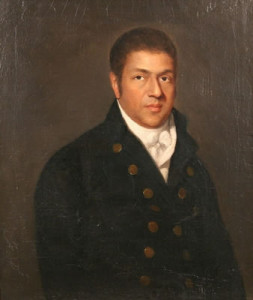Black History, Medicine

Poster from Office of War Information. Domestic Operations Branch. News Bureau, 1943
Edward Franklin Frazier (September 24, 1894 – May 17, 1962), was an American sociologist. His 1932 Ph.D. dissertation The Negro Family in Chicago, later released as a book The Negro Family in the United States in 1939, analyzed the historical force that influenced the development of the African-American family from the time of slavery.
The book was awarded the 1940 Anisfield-Wolf Book Award for the most significant work in the field of race relations. This book was among the first sociological works on blacks researched and written by a black person. He helped draft the UNESCO statement The Race Question in 1950.
E. Franklin Frazier was born in Baltimore, Maryland, on September 24, 1894. Frazier was one of five children of James H. Frazier, a bank messenger, and Mary Clark Frazier, a housewife. Edward Franklin Frazier attended Baltimore public schools. Upon his graduation from Colored High School, June 1912, Frazier was awarded the school’s annual scholarship to Howard University in Washington, DC, from where he graduated with honors in 1916. E. Franklin Frazier was an excellent scholar, pursuing Latin, Greek, German and mathematics. (more…)
Black History, Medicine
 The National Medical Association (NMA) is the largest and oldest national organization representing African American physicians and their patients in the United States. The NMA is a 501 (c) (3) national professional and scientific organization representing the interests of more than 30,000 African American physicians and the patients they serve, with nearly 112 affiliated societies throughout the nation and U.S. territories. The National Medical Association has been firmly established in a leadership role in medicine.
The National Medical Association (NMA) is the largest and oldest national organization representing African American physicians and their patients in the United States. The NMA is a 501 (c) (3) national professional and scientific organization representing the interests of more than 30,000 African American physicians and the patients they serve, with nearly 112 affiliated societies throughout the nation and U.S. territories. The National Medical Association has been firmly established in a leadership role in medicine.
The NMA is committed to improving the quality of health among minorities and disadvantaged people through its membership, professional development, community health education, advocacy, research and partnerships with federal and private agencies. Throughout its history the National Medical Association has focused primarily on health issues related to African Americans and medically underserved populations; however, its principles, goals, initiatives and philosophy encompass all ethnic groups. (more…)
Black History, Business, Medicine

Captain Paul Cuffee
A man of great energy and resolve, Paul Cuffee was born on the tiny island of Cuttyhunk, eleven miles offshore of New Bedford, MA. He was the seventh of ten children of Kofi Slocum, a freed African slave, and Ruth Moses, a Wampanoag Indian. His father took the name Slocum out of respect for the man who had freed him, John Slocum, a Quaker whose family owned Cuttyhunk.
His mother was descended from a long line of Wampanoags who had been friendly to the early white settlers. They were a hardworking, devout couple. Quakers themselves, they raised their children to be contributing citizens. They were free and ambitious, and they prospered. (more…)
Black History, Education, Medicine
 On November 9th, 1868, Howard University opened their medical school with eight students and five faculty members.
On November 9th, 1868, Howard University opened their medical school with eight students and five faculty members.
Among the eight students, seven were black and one was white. Out of the five faculty members, just one was black, Dr. Alexander Thomas Augusta — the first black Lieutenant Colonel and first Black surgeon in the U.S. Army. (more…)
Black History, Medicine, Publishing

Miles V Lunk
Miles Vandahurst Lynk was born near the small town of Brownsville, TN on June 3, 1871 in Haywood County. He was the first-born son of former slaves who made their living off of a small family farm. At the age of six, Miles Lynk’s father was killed in an accident and the young boy was forced to take on adult responsibilities in helping his mother on the farm.
In spite of the hard times, Lynk’s mother insisted that her son attend the rural black schools in the region at least five months a year. She spent much of her time tutoring him herself. She covered the gaps in his education with what books she could acquire and the young boy became a voracious reader. They made enough money from the farm to hire a private tutor and Miles’ was able to study advanced academic subjects and gained an able education. (more…)
Black History, Medicine

Robert Tanner Freeman
The First Black Dentist
Dr. Robert Tanner Freeman was the first African American dentist to receive a degree in the United States. He graduated from the Harvard University Dental School in 1869. He and George Lewis Ruffin (Law School) share the distinction of being the first African Americans to graduate from Harvard University. Freeman was born in Washington, D.C. to former slaves from North Carolina, and as a young man was hired by a local dentist, Dr. Henry Bliss Noble.
He began as a clerk and became a dental assistant. Dr. Nobel encouraged him to pursue a career in dentistry as a way to help alleviate the sufferings of other blacks.Freeman applied to, and was rejected by, two colleges before he was accepted, in 1867, as one of the sixteen members of the inaugural class at the newly formed Harvard Dental School.
His fellow classmates included another African American, George Franklin Grant. Upon graduation in 1869 he returned to Washington, D.C. to set up private practice in the same building as his previous employer and mentor.Freeman died four years later. (more…)





